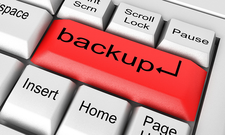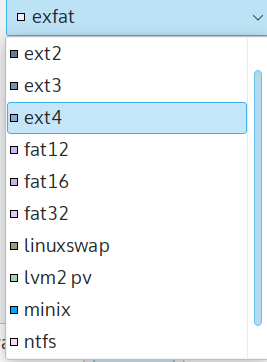Three strategies for better backups
Data Protection

Image © icetray, 123RF.com
To protect your data, you need to do more than schedule regular backups. Here are three often overlooked strategies that can help make your backups more accessible, secure, and reliable.
From rsync and rsnapshot to Bacula and Déjà Dup, Linux has no shortage of backup applications. You can even find basic suggestions for a backup strategy such as Ubuntu’s, which include such basics as storing at least one backup off-site. However, these suggestions are usually incomplete and occasionally misleading. As my own backup strategies have evolved, I have found three strategic considerations that are often neglected but can greatly affect a backup’s accessibility, security, and reliability.
Choose an Appropriate Filesystem
Most external drives come with NTFS or exFAT filesystems, so the users of recent Linux distributions can use them out of the box. However, thanks to parted and its desktop counterparts, reformatting an external drive takes only a few minutes, and users have no shortage of filesystems to choose from (Figure 1).

[...]
Buy Linux Magazine
Subscribe to our Linux Newsletters
Find Linux and Open Source Jobs
Subscribe to our ADMIN Newsletters
Support Our Work
Linux Magazine content is made possible with support from readers like you. Please consider contributing when you’ve found an article to be beneficial.

News
-
Parrot OS Switches to KDE Plasma Desktop
Yet another distro is making the move to the KDE Plasma desktop.
-
TUXEDO Announces Gemini 17
TUXEDO Computers has released the fourth generation of its Gemini laptop with plenty of updates.
-
Two New Distros Adopt Enlightenment
MX Moksha and AV Linux 25 join ranks with Bodhi Linux and embrace the Enlightenment desktop.
-
Solus Linux 4.8 Removes Python 2
Solus Linux 4.8 has been released with the latest Linux kernel, updated desktops, and a key removal.
-
Zorin OS 18 Hits over a Million Downloads
If you doubt Linux isn't gaining popularity, you only have to look at Zorin OS's download numbers.
-
TUXEDO Computers Scraps Snapdragon X1E-Based Laptop
Due to issues with a Snapdragon CPU, TUXEDO Computers has cancelled its plans to release a laptop based on this elite hardware.
-
Debian Unleashes Debian Libre Live
Debian Libre Live keeps your machine free of proprietary software.
-
Valve Announces Pending Release of Steam Machine
Shout it to the heavens: Steam Machine, powered by Linux, is set to arrive in 2026.
-
Happy Birthday, ADMIN Magazine!
ADMIN is celebrating its 15th anniversary with issue #90.
-
Another Linux Malware Discovered
Russian hackers use Hyper-V to hide malware within Linux virtual machines.

